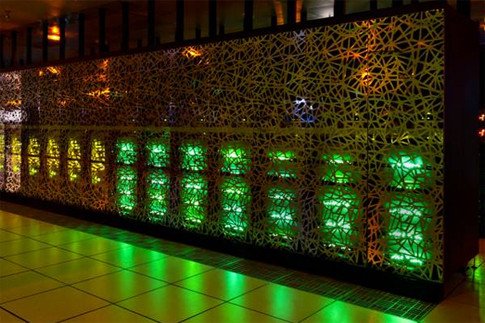Europe risks being left behind in High Performance and Supercomputing unless fundamental structural issues are addressed across industry and academia.
The shortfall in investment, the fragmented approach to the establishment of supercomputing centres, national barriers and falling capacity have been identified by the European Commission which said the EU needs a development plan similar to that which started the European Space Agency in 1975.
Individually the US and Japan have more supercomputing capacity than the whole of the EU combined. This is because HPC developments have been led at a national level, often driven by nuclear or military applications.
Despite the fact that the EU supercomputing market is primarily publically funded it is mainly supplied by US vendors.
“Europe has strengths in the application of HPC, and in the development of advanced software and services. Despite this, EU HPC suppliers held a market share of only 4.3%5 in 2009. Most EU HPC manufacturers had disappeared by the start of the new millennium. Since then US-manufactured supercomputers have captured 95 % of the EU market,” the EC said in a communique.
Even so the HPC market shrank between 2008 and 2010. Europe lacks advanced experimental high-end computation facilities that would allow industry and academia to explore exa-sacle technology options or co-design hardware and software for specific applications.
EC Plan
Now a major investment plan has been outlined by the EU as it seeks to address its failing position in high performance and supercomputing
The action plan to address this shortfall includes a pooling of national investments in HPC, with specific objectives around workforce training and a pan European HPC governance scheme for industry and science. For industry this will include the setting up of a network of competence centres.
HPC is of vital importance to the economic health of the EU and will drive societal and business benefits. The flip side of this is that a lack of HPC will do serious economic harm. The EC is urging the Council of Ministers and the European Parliament to double investment in HPC from the current level of Euro 600m. Finance should be shared between national budgets with a target of Euro1.2bn per year to be invested to bring Europe back to the level of that of a major HPC player, it said.
A serious issue is the lack of long term investment especially in pre commercial procurement.
The EC is pushing for further investment in PRACE - the center for supercomputing development which was established and received Council support in 2009. It became a legal entity in 2010. This allowed for academics to explore pooling of infrastructure and sharing of limited systems .
Neelie Kroes, European Commission Vice-President responsible for the Digital Agenda, said: "High Performance Computing is a crucial enabler for European industry and for more jobs in Europe. It’s investments like HPC that deliver innovations improving daily life. We’ve got to invest smartly in this field because we cannot afford to leave it to our competitors.”
Europe’s most powerful supercomputers according to the Top 500 supercomputer ranking of November 2011 are the system Tera-100 in France (Ôäû 9) and the HERMIT and JUGENE systems (Ôäû 12 and 13) in Germany. As of 13 February 2012, the top European supercomputer is CURIE of GENCI, located at CEA in France, according to information supplied the French government.
Beyond the EC the European IT industry has formed the European Technology platform for high performance computing. Member companies are: www.allinea.com; www.arm.com; www.bsc.es; www.bull.com; www.caps-entreprise.com; www.cea.fr; www.cineca.it; www.eurotech.com; www.fraunhofer.de; www.fz-juelich.de; www.lrz.de; www.par-tec.com; www.prospect-hpc.eu; www.st.com; www.teratec.eu;www.xyratex.com

